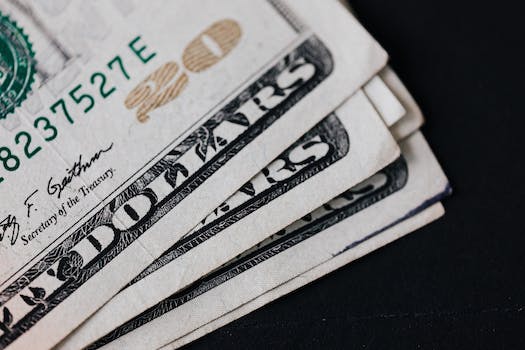How Much To Save Up To Buy A Car
“Calculate your car savings goal with ease.”
Introduction
Saving up to buy a car can be a daunting task, especially if you’re not sure how much you need to save. The cost of a car can vary greatly depending on the make and model, as well as other factors such as the age and condition of the vehicle. In this article, we’ll explore how much you should aim to save up in order to purchase a car that meets your needs and fits within your budget.
Determining Your Budget: How Much Should You Save Up for a Car?
Buying a car is a big investment, and it’s important to determine your budget before making any decisions. The first step in determining your budget is to figure out how much you can afford to spend on a car. This will depend on your income, expenses, and other financial obligations.
One rule of thumb is to spend no more than 20% of your monthly income on car payments. For example, if you make $3,000 a month, you should aim to spend no more than $600 a month on car payments. This will ensure that you can comfortably afford your car without sacrificing other important expenses.
Another factor to consider is the down payment. The larger the down payment, the lower your monthly payments will be. A good rule of thumb is to aim for a down payment of at least 20% of the total cost of the car. For example, if you’re buying a car that costs $20,000, you should aim for a down payment of at least $4,000.
It’s also important to consider the total cost of ownership. This includes not only the cost of the car, but also insurance, maintenance, and fuel costs. These expenses can add up quickly, so it’s important to factor them into your budget.
When determining your budget, it’s important to be realistic. Don’t stretch yourself too thin by buying a car that you can’t afford. Instead, focus on finding a car that fits within your budget and meets your needs.
Once you’ve determined your budget, it’s time to start saving. The amount you need to save will depend on the cost of the car and your down payment. If you’re buying a car that costs $20,000 and you’re aiming for a down payment of $4,000, you’ll need to save up $16,000.
One way to save up for a car is to set up a separate savings account specifically for your car fund. This will help you keep track of your progress and ensure that you don’t dip into your car fund for other expenses.
Another way to save up for a car is to cut back on unnecessary expenses. This could include eating out less, canceling subscriptions you don’t use, or finding ways to save on your monthly bills.
If you’re struggling to save up for a car, consider taking on a side hustle or finding ways to increase your income. This could include freelancing, selling items you no longer need, or taking on a part-time job.
In addition to saving up for a car, it’s important to shop around for the best deal. Don’t settle for the first car you find – instead, do your research and compare prices from different dealerships. You may also want to consider buying a used car, which can be a more affordable option.
In conclusion, determining your budget is the first step in buying a car. Consider your income, expenses, and other financial obligations to determine how much you can afford to spend on a car. Aim for a down payment of at least 20% of the total cost of the car, and factor in the total cost of ownership. Once you’ve determined your budget, start saving up for your car fund and shop around for the best deal. With a little planning and patience, you can find a car that fits within your budget and meets your needs.
The Pros and Cons of Financing vs. Paying Cash for Your Car

Buying a car is a big decision, and one of the most important factors to consider is how you will pay for it. There are two main options: financing or paying cash. Each has its own pros and cons, and it’s important to weigh them carefully before making a decision.
Financing a car means taking out a loan to pay for it. This can be a good option if you don’t have enough cash on hand to buy the car outright. With financing, you can spread the cost of the car over several years, making it more affordable in the short term. You’ll also have the option to choose a longer loan term, which can lower your monthly payments even further.
However, financing a car also means paying interest on the loan. This can add up over time, making the car more expensive in the long run. You’ll also be required to make monthly payments for the duration of the loan, which can be a burden if your financial situation changes.
Paying cash for a car means buying it outright with money you have saved up. This can be a good option if you have enough cash on hand to cover the cost of the car. With cash, you won’t have to worry about making monthly payments or paying interest on a loan. You’ll also own the car outright, which can give you more flexibility in terms of selling or trading it in the future.
However, paying cash for a car also means tying up a significant amount of money in one asset. This can be a problem if you need that money for other expenses, such as emergencies or investments. You’ll also miss out on the opportunity to build credit by making regular payments on a car loan.
So, which option is best for you? It depends on your individual financial situation and goals. If you have enough cash on hand to buy a car outright without sacrificing your emergency fund or other financial goals, paying cash may be the best option. However, if you need to spread the cost of the car over several years to make it more affordable, financing may be the way to go.
If you do decide to finance a car, there are a few things to keep in mind. First, shop around for the best interest rate and loan terms. Don’t just accept the first offer you receive from a dealership or lender. Second, consider making a larger down payment to lower your monthly payments and reduce the amount of interest you’ll pay over the life of the loan. Finally, make sure you can afford the monthly payments before signing on the dotted line.
No matter which option you choose, remember that buying a car is a big financial decision. Take the time to weigh your options carefully and make the best choice for your individual situation. With the right approach, you can drive away in the car of your dreams without breaking the bank.
Saving Strategies: Tips for Reaching Your Car Savings Goal
Buying a car is a significant investment, and it’s essential to have a plan in place to save up for it. Whether you’re looking to purchase a new or used car, it’s crucial to have a savings goal in mind. But how much should you save up to buy a car? In this article, we’ll explore some tips and strategies for reaching your car savings goal.
The first step in saving up for a car is to determine how much you can afford to spend. This will depend on your income, expenses, and other financial obligations. A general rule of thumb is to spend no more than 20% of your monthly income on car payments. So, if you make $3,000 per month, your car payment should be no more than $600.
Once you’ve determined how much you can afford to spend, it’s time to start saving. One strategy is to set up a separate savings account specifically for your car fund. This will help you keep track of your progress and avoid dipping into your savings for other expenses.
Another tip is to automate your savings. Set up automatic transfers from your checking account to your car savings account each month. This will help you stay on track and ensure that you’re consistently saving towards your goal.
It’s also important to consider the total cost of owning a car, not just the purchase price. This includes expenses such as insurance, maintenance, and gas. Be sure to factor these costs into your savings goal to ensure that you can afford to maintain your car once you’ve purchased it.
If you’re looking to purchase a used car, it’s important to do your research and shop around for the best deal. Consider purchasing from a private seller rather than a dealership, as private sellers may be more willing to negotiate on price. Additionally, be sure to have the car inspected by a mechanic before making a purchase to avoid any unexpected expenses down the road.
If you’re looking to purchase a new car, consider waiting for a sale or promotion. Many dealerships offer discounts and incentives throughout the year, so it may be worth waiting for the right deal to come along.
Finally, consider alternative methods of transportation while you’re saving up for your car. This could include carpooling, taking public transportation, or even biking or walking to work. Not only will this help you save money, but it will also reduce your carbon footprint and promote a healthier lifestyle.
In conclusion, saving up for a car requires careful planning and budgeting. Determine how much you can afford to spend, set up a separate savings account, automate your savings, and consider the total cost of owning a car. Shop around for the best deal, consider alternative methods of transportation, and be patient. With these tips and strategies, you’ll be well on your way to reaching your car savings goal.
Factors to Consider When Choosing a Car Within Your Budget
Buying a car is a significant investment, and it’s essential to consider several factors before making a purchase. One of the most crucial factors to consider is your budget. You need to determine how much you can afford to spend on a car and how much you need to save up to buy it.
The first step in determining how much to save up for a car is to set a budget. You need to consider your income, expenses, and other financial obligations to determine how much you can afford to spend on a car. It’s important to be realistic about your budget and not overspend on a car that you can’t afford.
Once you have set a budget, you need to consider the type of car you want to buy. Different cars have different price ranges, and you need to choose a car that fits within your budget. You can research different car models and their prices to determine which one is the best fit for your budget.
Another factor to consider when choosing a car within your budget is the cost of ownership. The cost of ownership includes expenses such as fuel, insurance, maintenance, and repairs. You need to factor in these expenses when determining how much you can afford to spend on a car.
When it comes to saving up for a car, there are several strategies you can use. One strategy is to set a savings goal and create a budget to help you reach that goal. You can also consider getting a part-time job or finding ways to earn extra income to help you save up for a car.
Another strategy is to consider financing options. Many car dealerships offer financing options that can help you purchase a car even if you don’t have the full amount saved up. However, it’s important to consider the interest rates and other fees associated with financing a car and make sure that you can afford the monthly payments.
It’s also important to consider the timing of your purchase. Car prices can fluctuate throughout the year, and you may be able to get a better deal if you wait for a sale or promotion. Additionally, buying a car at the end of the year or at the end of a model year can also result in lower prices.
In conclusion, buying a car is a significant investment, and it’s important to consider several factors when determining how much to save up for a car. Setting a budget, choosing a car within your budget, considering the cost of ownership, and using savings strategies are all important factors to consider. By taking the time to plan and save, you can make a smart and informed decision when purchasing a car.
Alternative Options: Leasing, Car Sharing, and Buying Used Cars
Buying a car is a significant investment, and it’s essential to plan and save up for it. However, there are alternative options to consider, such as leasing, car sharing, and buying used cars. In this article, we’ll explore these options and help you decide which one is the best fit for you.
Leasing a car is an option that allows you to drive a new car without having to pay the full price. Instead, you pay a monthly fee for the use of the car. Leasing can be a good option if you want to drive a new car every few years and don’t want to worry about maintenance costs. However, it’s important to note that leasing can be more expensive in the long run than buying a car outright. You’ll also have to adhere to mileage restrictions and return the car in good condition.
Car sharing is another option that has become increasingly popular in recent years. Car sharing allows you to rent a car for a short period, usually by the hour or day. This option is ideal if you don’t need a car every day and want to save money on insurance, maintenance, and parking costs. Car sharing services are available in most major cities, and you can easily book a car through an app or website. However, it’s important to note that car sharing can be more expensive than leasing or buying a used car if you need a car frequently.
Buying a used car is a popular option for those who want to save money on their car purchase. Used cars are typically less expensive than new cars, and you can often find a good deal if you do your research. However, it’s important to be cautious when buying a used car. You’ll need to inspect the car thoroughly and take it for a test drive to ensure that it’s in good condition. You’ll also need to factor in maintenance costs, as used cars may require more repairs than new cars.
When deciding which option is best for you, it’s important to consider your budget, lifestyle, and driving needs. Leasing may be a good option if you want to drive a new car every few years and don’t mind paying a monthly fee. Car sharing may be a good option if you don’t need a car every day and want to save money on insurance, maintenance, and parking costs. Buying a used car may be a good option if you want to save money on your car purchase and don’t mind the potential for higher maintenance costs.
Regardless of which option you choose, it’s important to save up for your car purchase. The amount you’ll need to save will depend on the option you choose and the type of car you want to buy. If you’re leasing a car, you’ll need to save up for the down payment and monthly fees. If you’re using a car sharing service, you’ll need to save up for the rental fees. If you’re buying a used car, you’ll need to save up for the down payment and any repairs or maintenance costs.
In conclusion, there are alternative options to consider when it comes to buying a car. Leasing, car sharing, and buying used cars are all viable options that can help you save money and meet your driving needs. When deciding which option is best for you, it’s important to consider your budget, lifestyle, and driving needs. Regardless of which option you choose, it’s important to save up for your car purchase and do your research to ensure that you’re getting the best deal possible.
Conclusion
Conclusion: The amount of money needed to save up to buy a car depends on various factors such as the type of car, its condition, and the location. It is recommended to save up at least 20% of the car’s total cost to avoid high-interest rates and to have a comfortable down payment. It is also important to consider additional expenses such as insurance, maintenance, and registration fees when budgeting for a car purchase. Planning and saving up for a car purchase can help avoid financial stress and ensure a smooth buying process.






